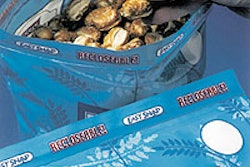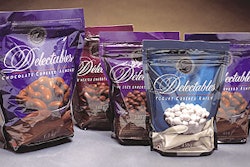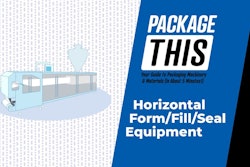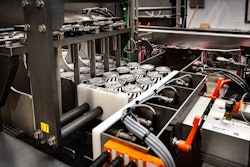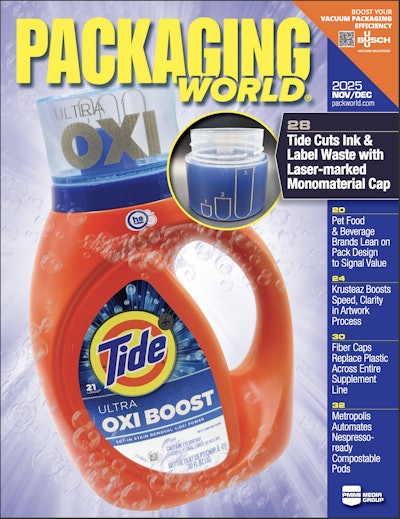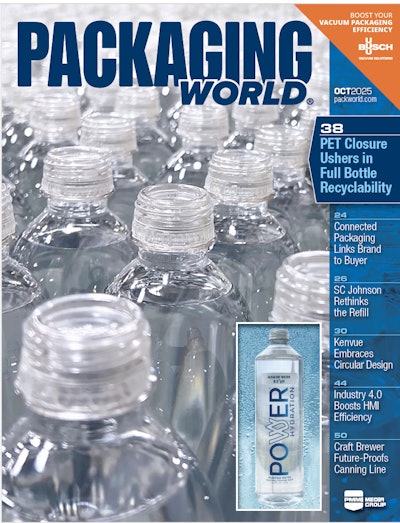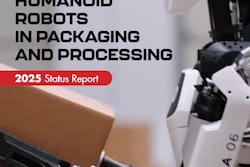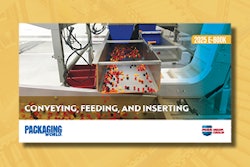In February in this space, I wrote about a freshly patented tamper-indicating closure whose inventor was having unexpected difficulty getting companies to take his development seriously. Two months later, I’m beginning to wonder if our concept of “security” isn’t becoming one of those banners so large and popular that some of the issues marching behind it may be stretching the term far too broadly. Bob Heilman’s closure—whether practical or not—responds to the package security challenge of providing a visual warning to the public about potential product tampering. This has been a crusade in our business for two decades, and the innovations that have been created are impressive. In addition, we’re also concerned with package tampering, and Congress is considering legislation to make package tampering a criminal act. This is in response to reports of people finding offensive literature inserted into packages of common brand-name products. Although this kind of activity tarnishes an innocent company name, it’s pretty far down the scale when considering public danger. A few weeks ago, I attended the workshop on packaging line security, sponsored by the Packaging Machinery Manufacturers Institute (Arlington, VA). This part of the topic rachets the security issue up several significant notches because it covers concepts as scary as contamination and bioterrorism as true public health threats. While the conference focused on assessing risks to individual companies, the solutions have to be highly individual. You can read about these in more detail in an upcoming issue. In the same vein, a recently passed law on bioterrorism will have a significant effect on packaging once the Food and Drug Administration figures out how to implement the goals of the legislation. I’ve been told that one requirement will demand that manufacturers of food products be able to document and record sources of all the packaging materials they use. It appears that product and package traceability will soon be joined by the need for companies to trace the origins of packaging materials as well. Packaging security? I’m kind of scratching my head on that one. But so long as it’s a component of regulations that prevent bioterrorism, I guess that it can be tucked behind the security flag. But there are two other issues that I’m having a lot of trouble defining as package security: product diversion and counterfeiting. In the January issue of Pharmaceutical & Medical Packaging News, colleague Daphne Allen discussed product security in her editorial, pointing directly at those two issues. The point of her editorial was to keep FDA from mandating any specific types of security provisions for a package, but much of the discussion was about thwarting diversion or product counterfeiting. Those are serious issues. But I don’t see them belonging—except in the broadest sense—behind the package security banner. That’s because there is often no public risk. Diversion, after all, is a distribution issue. Although it may put products into stores that otherwise wouldn’t qualify to sell them, there’s no public risk. Instead, the risk is borne by the company and its qualified customers. Counterfeiting, on the other hand, often involves a substitute product. Sometimes, there may be health risks with counterfeit products. But many—probably most—counterfeited products have nothing to do with foods and healthcare applications. And counterfeited food or drug products are rarely dangerous, often just benign. Like diversion, most of the risk in counterfeiting is to the company, not the public. Product and package security as public health issues are far too critical for them to be linked with issues whose only risk is to companies.
PipeLine: Packaging security: Which issues belong?
Nearly everywhere you look these days, the front-of-mind issue is security. Whether it be on a national or individual or company basis, security is a hot topic.
Mar 31, 2002
Companies in this article
Machinery Basics
Annual Outlook Report: Sustainability
The road ahead for CPGs in 2025 and beyond—Packaging World editors review key findings from a survey of 88 brand owners, CPG, and FMCG readers.
Download Now
The AI revolution in packaging robotics is here
Robots that see variations, adjust grip pressure automatically, accept plain-English commands, and predict their own maintenance. Discover how AI is transforming packaging operations.
Read More
Downloads




